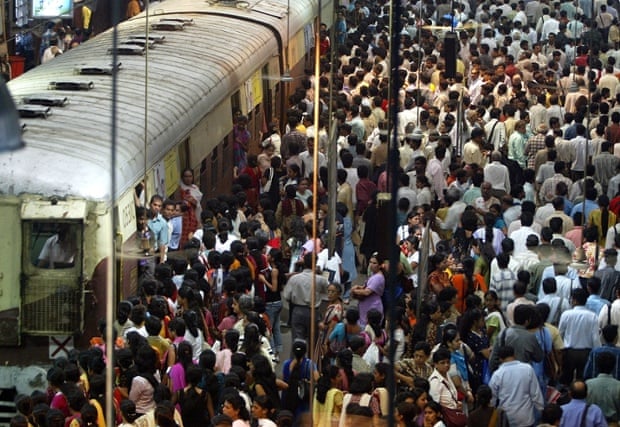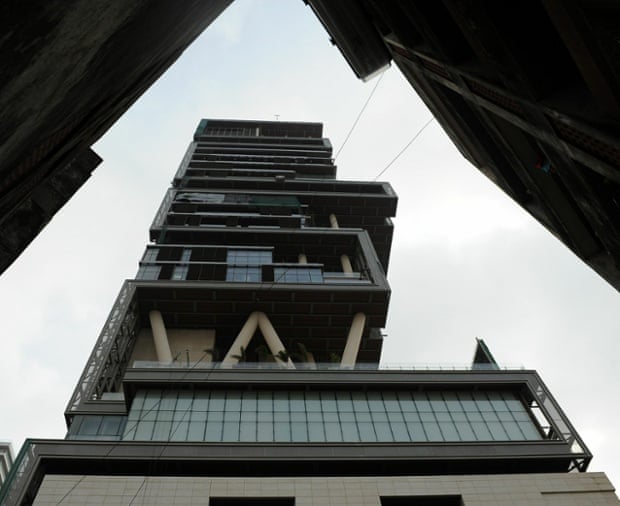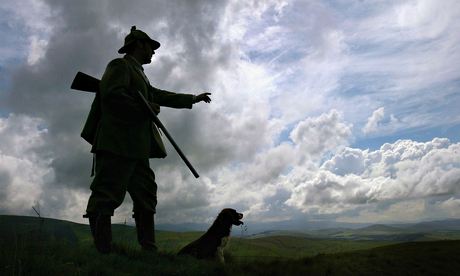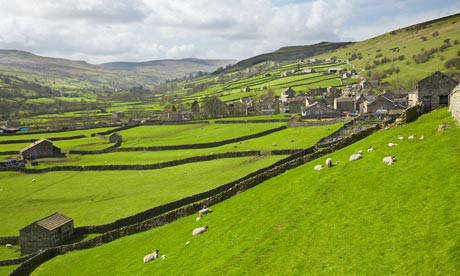Bachi Karkaria in The Guardian
It used to be India’s urban showpiece. Today, its sceptre and crown have fallen down and, in a phase of cynical destruction masquerading as “development”, Mumbai has become a metaphor for urban blight.
Consider these statistics. Rubbish could be its Mount Vesuvius. Some 7,000 metric tonnes of refuse is spewed out each day. Dumping grounds are choked, yet there is no government-mandated separation or recycling.
Around 7.5 million commuters cram themselves into local trains every day and the fledgling metro and monorail are unlikely to make a perceptible difference in the near future.
There are 700,000 cars on the road and the authorities indirectly encourage private vehicle ownership by adding flyovers and expressways, instead of building or speeding up mass rapid transit systems. Private vehicle numbers have grown by 57% in the past eight years, compared with a 23% increase in public buses.

Toxic nitric oxide and nitrogen oxide levels stand at 252 microgrammes per cubic metre (mcg/m3) more than three times the safe limit of 80 mcg/m3. Protests against sound pollution fall on deaf ears.
There’s less than 0.03 acres of open space per 1,000 people. The global norm is four; London has a profligate 12.
There are 12.7 million people jammed into the 480 sq km that comprise today’s Greater Mumbai, that’s 20,680 people per sq km. We are the world’s eighth most-populated city – and dying to prove it.
As a consequence, every sixth Mumbaikar lives in a slum. The premium on land was exacerbated by the Rent Control Act of 1947, which wasn’t amended till 1999. Too little, too late. Real estate prices are unreal. It’s cheaper to buy a flat in Manhattan than in Malabar Hill, and you can be sure that shoddy materials will shortchange you in Mumbai.
Considering that housing is the city’s biggest shortfall, it’s ironic that unbridled construction is indisputably its biggest problem. Many villains have been blamed for Mumbai’s descent into urban hell, from mafia dons to impoverished migrants, but for the past three decades the main culprit is the “politician-builder nexus”.
In 2005, the entire city was held hostage for three days. On 26 July, suburban Mumbai was lashed by 668 mm of rain in just 12 hours. Unwarned commuters and children in school buses were left high, but not dry, as roads and railway tracks disappeared. Slums and BMWs went under the deluge without discernment for their economic standing. It may have been the country’s financial capital, but in the photographs that followed, swaggering Mumbai didn’t look much different from a monsoon-marooned Bihar village.
For this humbling disaster, the finger pointed at that same culprit: the developer and his facilitator, the politician. There was nowhere for the rainwater to go. For decades the concrete army had been allowed to commandeer all open spaces, and illegal encroachments had done the rest. Public parks, verdant hills, salt-pans, school compounds, private garden plots, beaches, mangroves – nothing was spared.
The built environment in Mumbai had increased fourfold since 1925 – and at its fastest rate over the past 30 years – all at the cost of green cover and wetlands.

The 2005 deluge brought to light the little-known fact that Mumbai had a river. The Mithi had been reduced to little more than a turgid drain, bubbling with the putrefactions of one of Asia’s largest slums, Dharavi. Why blame its desperate inhabitants when the authorities had built an airport runway and much of the swanky new business district of the Bandra Kurla complex over it?
The traumatising flood was a flash-point. Citizens rose against all the civic atrocities heaped upon them. Why must they suffer such acute and chronic brutalising when Mumbai was the biggest contributor to the national economy? It accounts for 33% of income-tax, 20% of central excise collections, 6.16% of GDP (the largest single contribution in India), 25% of industrial output, 40% of foreign trade and 70% of capital transactions.
Activists demanded it should be administered separately under a chief executive-like head, instead of politicians who siphoned off its wealth to their rural constituencies. The municipal commissioner should be answerable to the elected corporate leaders not, illogically, to the state chief minister. But all this sound and fury receded with the flood waters, and it was soon business as usual.
The unequal war between profiteering and civic wisdom was in unabashed evidence some 20 years before this great flood. An eagerly anticipated shot in the arm turned into a wound that still festers. The cotton mills, on which Mumbai’s original fame and fortunes were built, had been killed off by the prolonged strike of 1982 (and chronic neglect by their owners).
After nearly a decade of legal wrangling, especially over the laid-off workers’ dues, it was decided to redevelop the defunct land – an eye-popping 600 acres in prime south and central Bombay. Recreational spaces, public housing and private enterprise were each to get a one-third share of the total area.

But in 1991, the relevant Development Control rule 58 was unilaterally changed by the chief minister, making only “open” land in the mills eligible for the division. This left the lion’s share to the owners, their builder accomplices and, naturally, the obliging politicians. The city got a mere fifth of its desperately needed windfall.
Instead of the imaginative, integrated development plan drawn up by Charles Correa, the renowned Mumbai-based architect, the former mill-hub of Lalbaug-Parel is a soulless cram of skyscrapers, mall-to-mall carpeting and snarled traffic clashing with the tenements housing the dispossessed worker families.
The opportunity for Mumbai’s redemption was obscenely squandered. The greedy, selfish “development” has worsened, instead of alleviating, its two biggest headaches: housing and traffic.
Now, a new phoenix is projected to rise from the 800 acres of decrepit dockland along the city’s eastern shoreline, again in the prime south. Will the city finally get its life-saving leisure space and affordable housing? Or will it be one more land-grab hastening its death by “development”?
Mumbai waits with more cynicism than hope.



